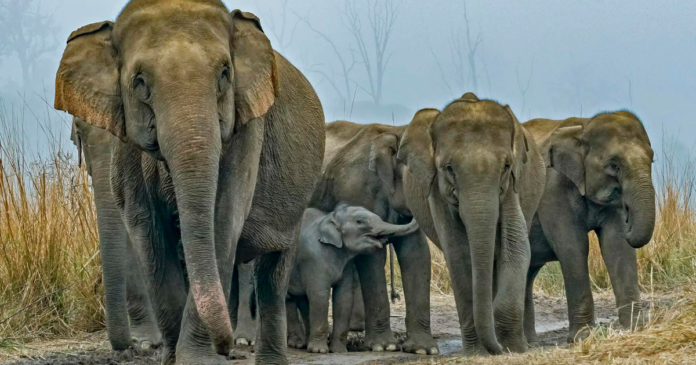The traditional radio may have become outdated. Nonetheless, the radio is essential in preventing disasters in the remote regions of Chhattisgarh where people are afraid of wild creatures, especially when it comes to alerting locals about the whereabouts of wild elephants.
Unexpected and frequent elephant rampages have resulted in several incidences of destruction and threats to life and property in Chhattisgarh.
First of its type in the nation, an initiative called “Hathi Samachar” has been launched to combat the threat.
As one might expect, it’s a news program on wild elephants that updates viewers on the movements and precise locations of these magnificent creatures.
Since its 2017 debut, the program has gained popularity among listeners, the majority of whom are from rural areas and benefit from the real-time information.
Among the states where human-elephant confrontations have left a wake of destroyed homes and agricultural lands in addition to taking multiple lives is Chhattisgarh.
Over 275 elephants in roughly 20 herds are said to roam around in several forest divisions in north and east central Chhattisgarh, officials told the media.
The news bulletin “Hathi Samachar” began as a kind of alert system. It was aired live for five minutes at five o’clock at five o’clock across four Akashwani centers—Ambikapur, Raipur, Bilaspur, and Raigarh—while simultaneously streaming in Hindi.
The forest department typically gathers information from local panchayat representatives, citizens, “hathi-mitra dals,” or elephant buddy organizations, and elephants wearing satellite radio collars.
As the paths of elephants or their herds are traced, the inputs on the observed movements are further confirmed. As a result, the bulletin’s goals extend beyond just disseminating information to include gathering information on elephant movement and behavior throughout the year.
The information gathered from regions where elephants are present is included in the daily briefing.
Earlier, the unexpected entrance of elephant herds had caused terror and panic among the local residents. According to Ramesh Sharma, a senior journalist who lives in Jashpur, a district severely impacted by conflict between humans and elephants, people may now be certain of the whereabouts of elephants with particular advice and guidance thanks to the early warning broadcast.
In addition to the four regional Akashwani centers, All India Radio FM channels provide the news briefing. It’s interesting to note that the bulletin is also recorded by locals and posted on several social media groups, allowing anyone who missed it on the radio to review the details later.
When herd pathways are monitored, inputs regarding elephant movements are further confirmed. The bulletin’s objectives extend beyond only disseminating information; it also gathers information on elephant movement and behavior throughout the year.



